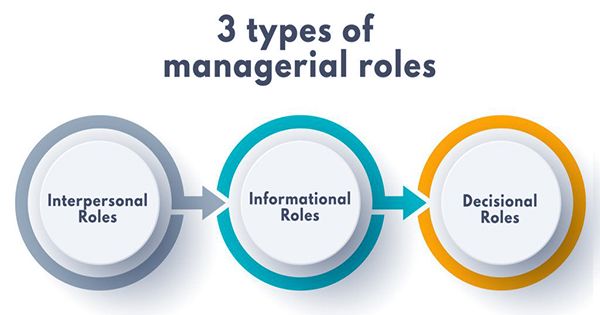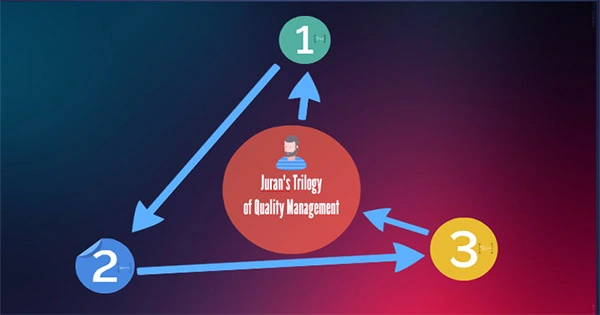It became clear during the Industrial Revolution that corporate operations needed to shift significantly. While most people agreed that change was inevitable, early proponents of management theory had different ideas about how things ought to develop and work. We will look at six different management theories on this page, all of which contributed to the foundation of management as we know it today. As you read about each one, keep in mind that although some of the theories may seem obvious to us now, when they were first proposed, they were revolutionary. These new theories were introduced by the Industrial Revolution, but in the decades that followed, as businesses altered to meet changing business needs, much more innovation emerged.
Scientific Management Theory: This hypothesis was developed near the end of the 19th century by Fredrick Taylor. He thought that the scientific technique would provide the best outcomes from office workers. The optimum technique to complete a certain activity should first be determined using the scientific method. Then, you assign employees to jobs that are compatible with their skills and train them to produce as much as possible. Then you must keep an eye on the employees to make sure they are employing the best practices. Finally, managers ought to devote their time on planning and training for new projects. The Scientific Management Theory still has applications in some areas. When assistance is required, managers should give it, and they should always consider the future. However, employees have more freedom to express their opinions about how their jobs should be carried out and are frequently not employed to complete a single task. At the turn of the century, giant corporations, not small contemporary offices, were the greatest candidates for the Scientific Management Theory.\
Administrative Management Theory: Henri Fayol created the administrative management theory in the early 1900s, and it is still seen as being very pertinent today. Fayol established fourteen principles that, in his opinion, laid the groundwork for powerful and prosperous businesses. It’s vital to note that while Fayol shared many of Taylor’s beliefs and views, the primary distinction between the two is that whereas Taylor concentrated on finding the best way to complete the work, Fayol prioritizes the organizational structure of an organization as a whole.
One of Fayol’s guiding principles was to ensure that each employee had just one direct management and that there was a positive manager-employee connection. The idea that everyone in a corporation should be in alignment with organizational goals is another crucial component of Fayol’s administrative management philosophy. Organizational structure, in Fayol’s opinion, is essential to a company’s success and productivity.
Bureaucratic Management Theory: By emphasizing that a bureaucratic organization is an impersonal machine that is more concerned with numbers and output than with the welfare of its people, the word “bureaucracy” sometimes conjures up negative or disparaging connotations. However, the actual connotation is substantially different from what was intended. The bureaucratic management theory was developed by Max Weber near the end of the 19th century. Contrary to how the term is currently used, Weber thought that bureaucracy required methodically formulating and outlining organizational goals and job descriptions. This meant creating a chain of command within the business, but it also involved assisting and advancing workers.
Weber added a few crucial concepts of his own to further develop Taylor’s theory. Weber advocated meticulous record keeping at all levels to track efficiency and identify opportunities because, like Taylor, he thought that task efficiency was a crucial element to success. He concurred that each task should be standardized to enable for optimal production and that each employee should have clear job objectives. Weber’s belief in the significance of human emotion stands out as the most significant distinction between the scientific theory and the bureaucratic theory.
There is an anti-bureaucratic attitude present even in today’s business sector. For instance, the word leadership is frequently used instead of management. The justification for this is that although management is a routine and organized process, leadership is a singular and valiant deed. With this way of thinking, leaders are valued and acknowledged whereas managers are seen negatively. Although managers and leaders sometimes seem to carry out their duties in the same manner, there is a clear effort to eradicate perceived bureaucratic vocabulary and tone from today’s workplace.
Human Relations Management Theory: Human relationships and interactions are at the heart of Human Relations Management Theory, as the name suggests. According to Elton Mayo, all early management theories solely addressed how compensation affects worker performance. He thought there were additional elements that affected how workers conducted themselves and performed at work. He started a research at Chicago’s Western Electric Hawthorne Plant in the 1920s and 1930s to test his theory, and based on his results, he developed his own management theory that is now more well known as The Hawthorne Effect.
The Hawthorne Study’s initial objective was to ascertain whether or not adjusting the illumination would have an impact on workers’ productivity. They started the study with a small group of employees, with whom they interacted continuously. Productivity rose regardless of how the illumination was altered, according to the study. When they were unable to determine why productivity increased, they started looking outside of their department to see if the outcomes were the same. They came to understand that while the daily encounters with the staff throughout the process inspired them to work more effectively and produce more, the lighting modifications had no discernible impact on productivity.They gave workers the freedom to express their ideas, frustrations, and achievements, which made them feel more appreciated. Additionally, individuals were more driven to work harder since they were aware that they were being watched. This was a ground-breaking discovery that shed light on interpersonal relationships and emphasized the significance of both individual and group dynamics.
General Systems Theory: Ludwig von Bertalanffy, a biologist, developed his General Systems Theory in the 1940s. You might be perplexed as to how a biologist could possibly affect management. See if you can make any connections as you read on.
According to Ludwig von Bertalanffy, your body is made up of all its individual parts. For instance, your neurological system and digestive system collaborate with each other as well as with your muscles and organs to enable you to function. The body can’t function properly if one of its functions isn’t functioning properly. When every component of a person is functioning well, they are at their healthiest and most productive. He also suggested that each component might be impacted by the environment. You might be unable to move around due to a broken limb or you might spend days in bed due to the virus. Each of these problems has the potential to reduce a person’s total productivity.
Today, many management ideas and styles still use Ludwig von Bertalanffy’s theory. His research demonstrates how environmental toxins might come from outside sources. Although he was speaking of the human body, the workplace is a good example of this. At all levels of a company, motivation and performance can suffer from negativity and other poisonous outlooks. Additionally, just as his theory predicts, when one part of an organization isn’t operating effectively, the remainder of the organization will suffer as a result.
X&Y Management Theory: Douglas McGregor established the X&Y Management Theory by proposing that all managers can be divided into two groups based on his findings from the 1950s and 1960s. The first group, called as Theory X, says that managers have a poor opinion of their staff and think that they must be coerced or forced to work. Theory X Managers frequently micromanage because they think that their staff won’t be driven to do their work on their own. This notion can be traced back to scientific management theory, which prioritizes output over employee input and development.
On the other end of the scale, Theory Y managers think that workers are driven to do their jobs by an innate motivation. Theory Y managers understand how crucial it is to support their workers’ success by giving them opportunities for growth. The focus of Theory Y is the distinction between teamwork and solo effort. According to McGregor, teamwork and a focus on each employee’s professional growth lead to greater outcomes and a more positive workplace atmosphere. The significance of Theory Y is continually being demonstrated and it is still used in the corporate world today.
















